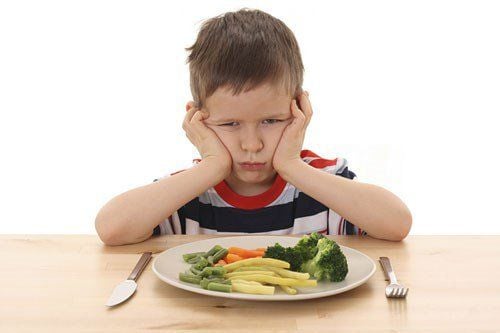This is an automatically translated article.
Malnourished 4-year-old children will often be accompanied by symptoms such as anorexia, weight loss, limited mobility and thinking... affect the health and development of children. Therefore, when children show signs of malnutrition, parents need to consult a doctor to take effective measures to improve.
1. Causes of malnutrition in 4-year-old children
Malnutrition occurs when children are deficient in micronutrients, including energy-producing nutrients and non-energy-producing nutrients. When a 4-year-old child is malnourished, it will slow down the child's body development, even stop growth or decrease the functioning of the body's organ systems. This condition can happen to children of any age.
Some of the causes leading to malnutrition in 4-year-old children are:
Improper nutrition for children: This is probably the most common cause of cases such as not being breastfed. full mother and possibly premature weaning; Parents who are not properly feeding their children cause a shortage or no breast milk to feed their children; Parents practice feeding their children the wrong way. Or when children have diseases related to respiratory or digestive infections, parents only use porridge with white salt or sugar for a long time, making children seriously deficient in nutrients. Children with anorexia : This is also seen as a dilemma for parents. No matter what parents do, children feel the meal is like a torture and torture. When children refuse to eat, parents are always impatient and worried. However, children with anorexia may be due to boring, unattractive and stimulating foods. Children may suffer from diseases related to respiratory infections, digestive disorders, measles, diarrhea... Due to the family's economic difficulties, children have not been given proper and sufficient care, especially children. live in polluted environments or may be due to poor local health care.

Trẻ 4 tuổi suy dinh dưỡng có thể do biếng ăn
2. Typical signs of malnourished 4-year-old children
According to the assessment standards of the World Health Organization WHO, the average weight and height of 4-year-old children depends on gender, specifically:
4-year-old girl weighs 16.1 kg and height is 102.7 cm; 4-year-old boy weighing 16.3 kg and height 103.3 cm. Through this figure shows that if a 4-year-old child weighs 20kg, the child's weight is excessive and can also be a bad sign for the child's health. However, if the weight and height of a 4-year-old child does not reach the threshold according to the assessment standards of the World Health Organization WHO, the child may be malnourished.
Malnourished 4-year-old children often have the following recognition signs:
Children will experience anorexia, fatigue, or fussiness, inflexible activities like normal children; Your baby probably won't gain or lose weight consistently for 2 to 3 months. For this case, parents should regularly monitor the child's weight and height using a growth chart. Children's sleep is not of good quality, children often toss and turn, have trouble sleeping, startle and cry while sleeping. Moreover, parents can observe the child's pale skin, hair may fall a lot, especially in the occipital area, or the child can easily and often get infections. However, in addition to the signs of identifying malnourished children, experts can use tools to determine weight, height, age, and sex to analyze the nutritional status of children according to the assessment of the Children's Nutrition Team. World Health Organization.
For parents, in case their child is found to have signs of being short compared to peers or the child is less flexible, eats less, does not eat excitedly, pale skin, pale muscles, even atrophy If sleep quality is not guaranteed, parents need to take the child to a medical facility for timely examination and treatment by a nutritionist or doctor.

Trẻ 4 tuổi suy dinh dưỡng có chiều cao thấp hơn trung bình
3. What do 4-year-olds eat to gain weight?
First, when parents know that their child is experiencing health conditions related to malnutrition, it is necessary to ensure the nutritional needs of 4-year-old children. At this age, children will not have the same rapid growth rate as the first 3 years of life, but each year children can still gain about 2kg in weight and 7cm in average height. Therefore, parents need to pay attention to the nutrition when the child is 4 years old to be able to provide all the necessary nutrients.
Moreover, children at this age will have a gradually perfected digestive system, so their daily menu will also become more diverse with a variety of foods. When children get used to a variety of foods, their taste buds will be better stimulated and they can enjoy their meals. Parents who provide adequate quantity and quality of meals for children will help children meet their energy needs for metabolism and growth.
The average child's need for energy at this age is about 1470 kcal. The main groups of nutrients provided in children's meals include proteins, lipids, carbohydrates, vitamins and minerals, and water. The number of meals for children should apply 5 meals, including 3 main meals and 2 snacks. The main meals parents should provide full nutritional components from foods and ensure adequate supply of 36 grams of protein per day. The snacks parents can encourage children to use foods beneficial to the digestive system, such as yogurt, cheese, whey... And with 4-year-olds, parents continue to maintain Milk content is about 500ml.
Safe food also plays an important role in children's health. One of the causes of malnutrition in children is parasitic infection from food due to unsanitary conditions in purchasing, processing and storage. Therefore, to prepare children a safe meal, parents should:
Choose foods with clear origin, and at the same time avoid exposing children to foods that are easily contaminated. Parents always follow the rule of cooked food for children and do not allow children to use rancid foods or foods that have been left overnight. In addition, parents need to regularly clean the environment around their children, instruct them to wash their bodies and hands before eating and after going to the toilet, in order to minimize risk factors for disease. infections in children. With malnourished children, children may not be excited to eat, even they may have anorexia, but parents should not put pressure on children in the process of eating. This will make children afraid and avoid meals. Instead, parents should give children psychological comfort and encourage them to eat according to their needs. In addition, parents can let their children participate in preparing meals to stimulate and encourage children as well as provide them with knowledge to help children recognize the benefits of food for health.
Besides, the baby also needs to be supplemented with necessary micronutrients such as: Zinc, selenium, chromium, vitamins B1 and B6, ginger, acerola fruit extract (vitamin C),... to improve taste , eat well, reach the correct height and weight, strengthen the resistance to get sick less often and have less digestive problems.
Please dial HOTLINE for more information or register for an appointment HERE. Download MyVinmec app to make appointments faster and to manage your bookings easily.













